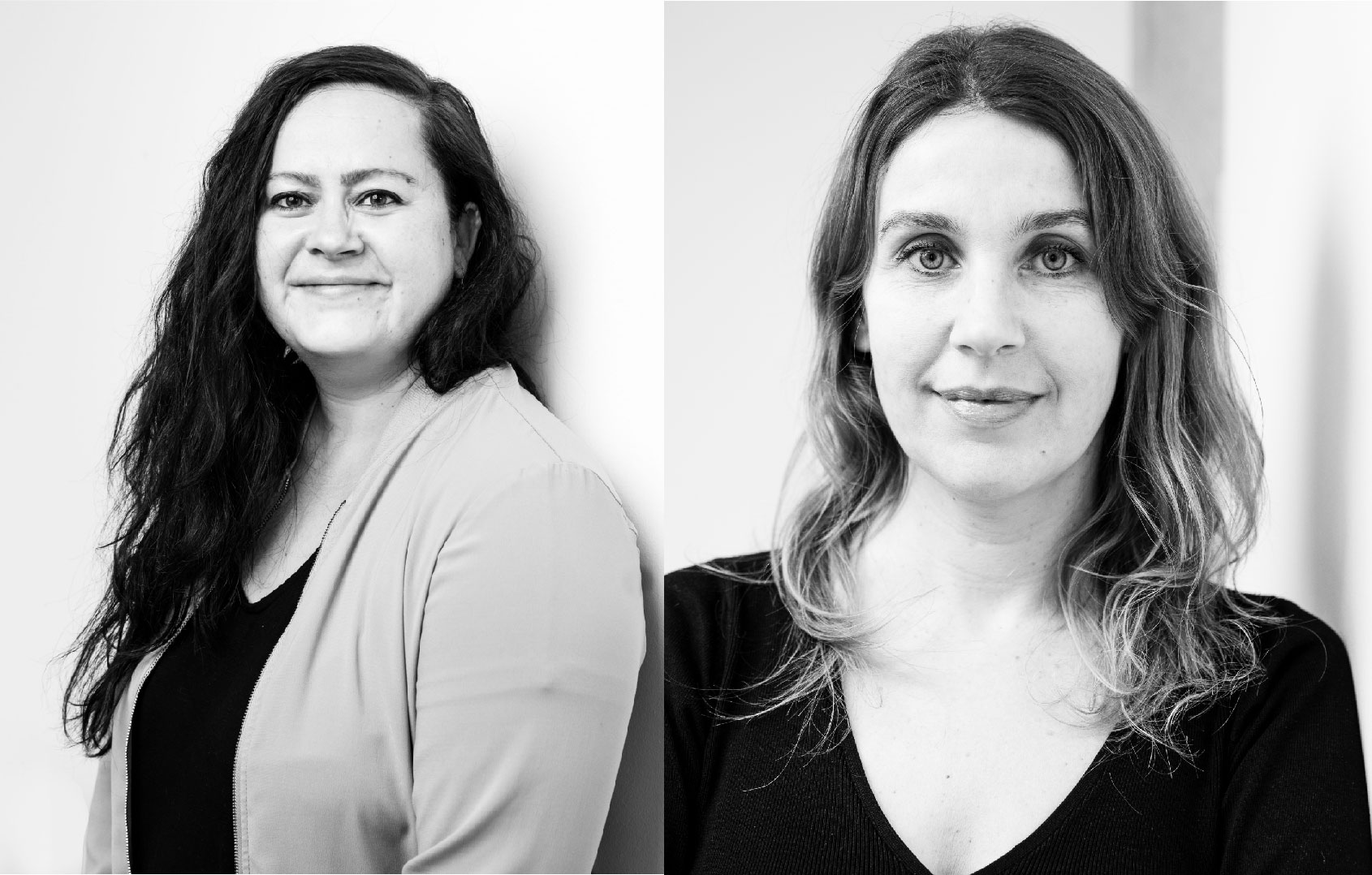Maria Ott and Solveig Steinhardt on the daily challenges and successes of the SCIoI Communication Office
The two SCIoI communication officers Maria Ott and Solveig Steinhardt in an Interview with Kathleen Waak.
Maria and Solveig, the two of you represent the communication office of Science of Intelligence. What does that mean?
Solveig: Maria and I are responsible for all of SCIoI’s external communications. This goes well beyond classic PR work and also includes strategic and editorial meetings, frequent brainstorming sessions to come up with creative ideas for new formats and events, and networking with other clusters and institutions – and of course a lot of bureaucracy and logistics, too. One of our main goals is to give our researchers the opportunity to promote their science, so a big chunk of our work involves finding ways to offer them the tools, the channels, and sometimes the skills to do that.
Maria: We are very excited about the scientific work at our cluster, and this is reflected in our approach to support the scientists here. We want to create an environment of transparency and collaboration where the communication office is a key player in helping to promote the scientific achievements and advancements of our researchers. One practical example is the SCIoI Fair – a great event that will take place in the second half of this year, and that we are currently planning.
You both have scientific backgrounds in different fields. How did your backgrounds lead you to science communication?
Maria: As a cultural anthropologist, I have conducted lots of field research, from the analysis of postcolonial state practices to the livelihoods of street children in Central Asia. After my studies, I went on to work for the Fraunhofer Heinrich-Hertz-Institute, where I explained tech to a variety of different audiences. And surprisingly, the methods from within my studies did not differ too much from the approaches I then used to understand and explain Fraunhofer technologies to different public groups. I am ever since enthusiastic about understanding complex microcosms and finding a relatable language to explain them.
Solveig: Right after graduating from university I went on to work on a coastal engineering research project on beach erosion. From a boat, I had to dredge materials from the bottom of the sea around Elba Island and analyze (yes, actually count and measure) grains of sand in order to map them and see how their sizes related to sand motion. Part of the project also involved talking to elderly locals in order to get information about past coastlines in the area, which meant finding ways to explain the project without getting too technical. Since then, I’ve been passionate about science dissemination, and this has influenced my career choices since.
Why is science outreach so important?
Maria: Overall, science outreach is essential for promoting a greater understanding of science, fostering public support for scientific research, and ensuring that scientific knowledge is effectively communicated and applied to address the challenges that society faces. It also encourages STEM education and careers, and at the same time provides the scientists themselves with new ideas and networks as they get closer to the wider public. All in all, it helps to demystify scientific research and promotes informed decision-making based on scientific findings.
The best part about your job?
Solveig: The relations with the scientists – there’s always something new to learn! But I also really enjoy the feeling of accomplishment when a press release, or a news item, our yearly wall calendar, or a podcast episode, is finished, well polished, and ready to be published.
Maria: I can only subscribe to that! Especially when we bring more attention to the cluster’s research – it’s a special treat!
What can you offer to SCIoI scientists?
Solveig: One of our big objectives is to make sure the science and the scientists get the visibility they deserve. In order to do that, we help scientists come up with outreach events to best present their work, or we promote their research via press releases and news articles. We also help them talk to journalists, present their profiles and successes on our website, and in some cases, give them the science communication training they will need in their research career.
Maria: We also provide support in Social Media best practice: polishing a profile, engaging with important stakeholders, and enhancing a professional scientific network are some of the skills we cover. On another note, this year especially, we will be focusing on how to create a demonstrator for an exhibition. Building a demonstrator is a powerful way for a scientist to effectively communicate their research to a wide range of audiences, including peers, policy makers, and the general public. And as we plan our SCIoI Fair event, we want to think out of the box together with the scientists, and visualize their research in the context of an exhibition.





